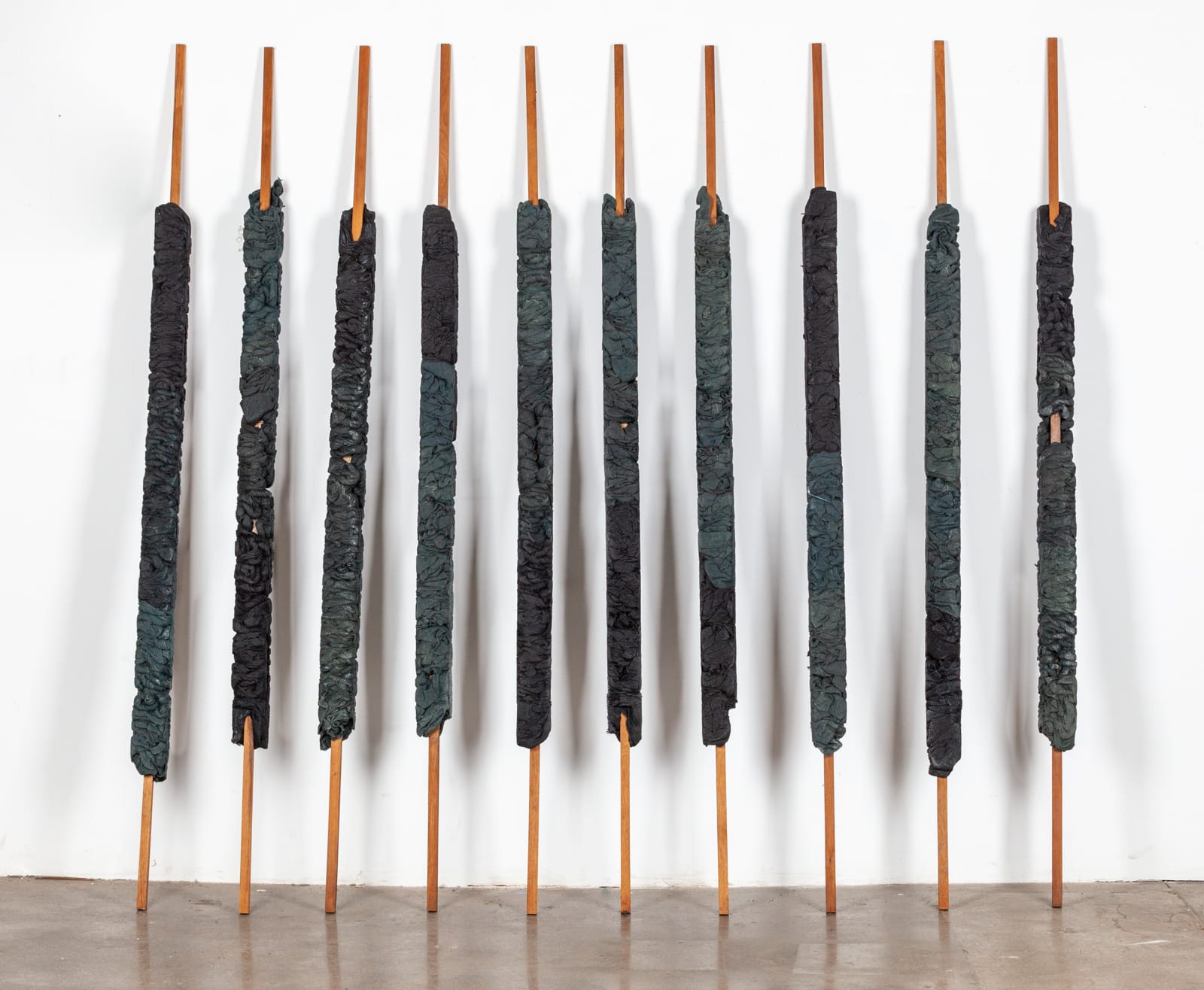Manish Nai India, b. 1980
Variable arrangements, colors, and poles
Further images
Jute has been used in Southeast Asia for millennia to make rope, canvas, grain sacks, and clothes. Its leaves are sometimes enjoyed as a potherb in soup. During colonial times, its forced cultivation enriched generations of British jute barons whose exploitative factories exported sacks to the cotton plantations of the American South and sandbags to the trenches of World War I. The whaling industry was also once tied to jute, as whale oil offers a perfect lubricant to prepare the fiber for machine processing. For Nai the material is personal—his parents worked in textiles, and when their business closed, leftover jute fabric stock filled the family apartment.
Natural indigo dye is made from the leaves of indigofera tinctoria, a bean plant long cultivated in India. It has been used in the production of art for centuries. In his essay about Nai’s work for the Het Noordbrabants Museum, Mumbai-based art critic Girish Shahane tells us, “Indigo has a history in India that goes back probably millennia. The British colonial government forced farmers in parts of India to plant indigo on a section of their farmland to maximize state revenues. However, in the 1890s, the German company BASF mastered an inexpensive chemical process to produce a similar dye, and natural indigo production plummeted. When, during the first World War, indigo from Germany stopped being available in Britain, Indian farmers were again pressed to grow the plant. An agitation launched by indigo farmers in 1917 in a district called Champaran in the northern state of Bihar became the site of Mahatma Gandhi’s introduction of satyagraha, or non-violent resistance, to the Indian freedom movement.”
These meaningful materials, so full of history, interact in this work with the traditional mediums of the contemporary artist—paper, paint, and canvas—to create a collective aesthetic action that speaks eloquently to the experience of this particular artist in this specific place and time in history.
Provenance
Artist Studio, MumbaiKavi Gupta, Chicago

